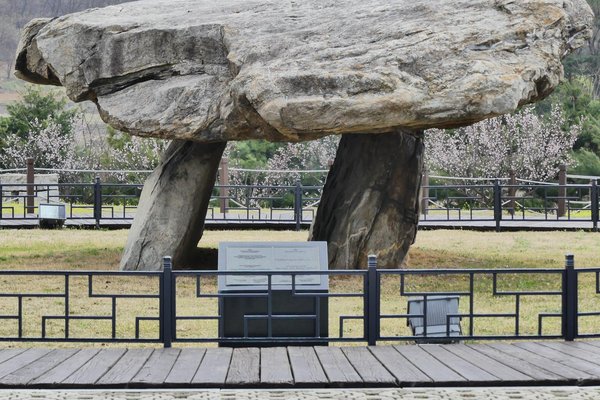Republic of Korea
Gochang, Hwasun, and Ganghwa Dolmen
The Gochang, Hwasun, and Ganghwa Dolmen Sites comprise dense groups of megalithic funerary and ritual monuments.
The dolmens, usually two or more undressed stone slabs supporting a huge capstone, were Neolithic and Bronze Age burial chambers. These sites hold the most diversified examples worldwide. The surrounding areas have provided evidence of how the stones were quarried, transported and raised and generally about the prehistoric people who built them.
Community Perspective: The large dolmens at Ganghwa Island are often visited as they lie close to Seoul. Clyde has explained how to get there on public transport. Kyle and GabLabCebu have described the cluster in Gochang, which has the largest concentration of dolmens, perhaps anywhere in the world, and Philipp added Hwasun.
Site Info
Official Information
- Full Name
- Gochang, Hwasun, and Ganghwa Dolmen Sites (ID: 977)
- Country
- Republic of Korea
- Status
-
Inscribed 2000
Site history
History of Gochang, Hwasun, and Ganghwa Dolmen
- 2000: Inscribed
- Inscribed
- Type
- Cultural
- Criteria
- iii
Links
- UNESCO
- whc.unesco.org
- Official
-
- english.visitkorea.or.kr — Gochang Dolmen Site
- english.visitkorea.or.kr — Hwasun Dolmen Site
- english.visitkorea.or.kr — Ganghwa Dolmen Site
- Related
-
- koreanheritage.kr — Korean Heritage Magazine: Dolmens Offer Rare Glimpses into the Lives of Prehistoric Humans
All Links
UNESCO.org
- whc.unesco.org — whc.unesco.org/
Official Website
- english.visitkorea.or.kr — Gochang Dolmen Site
- english.visitkorea.or.kr — Hwasun Dolmen Site
- english.visitkorea.or.kr — Ganghwa Dolmen Site
Related Resources
- koreanheritage.kr — Korean Heritage Magazine: Dolmens Offer Rare Glimpses into the Lives of Prehistoric Humans
Community Information
- Community Category
- Secular structure: Burial
Travel Information
Yeosu Hotspot
< than 75km from Hwasun Dolmen site
Seoul hotspot
Recent Connections
-
Yeosu Hotspot
< than 75km from Hwasun Dolmen site
-
Free entrance
-
Recently discovered
"The Hwasun group was not discovered un…
Connections of Gochang, Hwasun, and Ganghwa Dolmen
- Individual People
-
-
Homer B. Hulbert
"I incline strongly to the opinion that they are very ancient graves, in spite of the fact that no bones are found. These dolmens are much more ancient than any Koryu grave." - The Passing of Korea (1905) pg. 295
-
- History
-
-
Bronze Age
"Dolmens appear to have arrived in the Korean peninsula with the Bronze Age." (AB ev) -
Megalithism
The global prehistoric technological and social phenomenon that resulted in the appearance in the 2nd and 3rd millennia BCE of funerary and ritual monuments constructed of large stones (the "Megalithic Culture") is nowhere more vividly illustrated than in the dolmen cemeteries of Gochang, Hwasun, and Ganghwa. (OUV)
-
- World Heritage Process
-
-
Inscribed on a single criterion only
iii. to bear a unique or at least exceptional testimony to a cultural tradition or to a civilization which is living or which has disappeared -
Perfect Inscriptions
2000
-
- Religion and Belief
-
-
Legends and Folk Myths
"In Hwasun-gun, South Jeolla Province, there is a dolmen known as "Pingmae Rock," which is related to a legend about the Fairy Grandmother. It is said that when the Fairy Grandmother heard that 1,000 images of the Buddha and 1,000 pagodas were being built at the nearby Unjusa Temple, she picked up a huge stone and headed toward the temple. But along the way, she was told that all the images and pagodas had already been completed, so she laid the stone down there and departed." - www.koreaembassyusa.org
-
- Human Activity
-
-
Festivals
Festivals are held yearly at all three Dolmen Sites."Ganghwa Dolmen Cultural Festival is the most famous of Ganghwa Island's festivals. It celebrates the island's dolmens, which have been designated as a World Heritage site by UNESCO. The Dolmen Festival includes several performances, such as the reenactment of a traditional Korean funeral ceremony and a demonstration of how the dolmens were constructed." - english.visitkorea.or.kr -
Stone Quarries
"They also preserve important evidence of how the stones were quarried, transported, and raised..... Hwasun Dolmen Site ...In a number of cases the stone outcrops from which the stones making up the dolmens were quarried can be identified."
-
- Constructions
- WHS on Other Lists
-
-
Global Geoparks
Mudeungsan Area (2018) includes the Hwasun Dolmen Site. Also Jeonbuk West Coast UNESCO Global Geopark. -
World Biosphere Reserves
Gochang (2013)See www.unesco.org
-
- Timeline
-
-
Built in the 7th century BC
The Chungnim-ri group in Gochang is considered to date from around the 7th century BC. Dolmen construction ceased here in the 3rd century BC. The Hwasun dolmens are a little later, from the 6th-5th centuries BC. There are insufficient data to permit dating of the Ganghwa group, but they are thought to be earlier rather than later.
-
- WHS Hotspots
-
-
Yeosu Hotspot
< than 75km from Hwasun Dolmen site
-
Seoul hotspot
< than 75 km to Ganghwa Dolmen sites, traffic depending 1.5 hours by car
-
- Science and Technology
-
-
Recently discovered
"The Hwasun group was not discovered until 1996." - AB Document
-
- Visiting conditions
News
No news.
Recent Visitors
Visitors of Gochang, Hwasun, and Ganghwa Dolmen
- Alejandro Lau
- Alexander Lehmann
- Alexander Parsons
- Alex Goh
- anthonybonbon
- Atila Ege
- Bernard Joseph Esposo Guerrero
- Bigboss99
- Boj
- bossc
- c82wc1
- Casey
- chenboada
- Christoph
- Christravelblog
- Clyde
- Corinne Vail
- CugelVance
- cutecid
- Daniel Chazad
- Dimitar Krastev
- Dr. Caligari
- Elaine McArdle
- Els Slots
- Erik Jelinek
- Errol Neo
- Eva Kisgyorgy
- Fan Yibo
- Feldhase
- Felicité
- Frederik Dawson
- GabLabCebu
- Garrett
- GeorgeIng61
- Hadrianus
- Harry Mitsidis
- henryjiao18
- Iain Jackson
- Ian Cade
- inomusay
- Jacob Choi
- Jan Zimmermann
- Jarek Pokrzywnicki
- Javier
- Jawnbeary
- Jeanne OGrady
- JL
- Joel on the Road
- Jonas Kremer
- Joyce van Soest
- Kasper
- Kim, Soo-youn
- Kristin
- Kyle Magnuson
- Loic Pedras
- Luboang
- Ludvan
- Luis Filipe Gaspar
- Lukasz Palczewski
- Luke LOU
- Maciej Gil
- Martin
- MaYumin
- Michael Ayers
- Michael Turtle
- Mihai Dascalu
- Miloš Tašković
- nan
- Nihal Ege
- Olli-Pekka Turunen
- Patrik
- Paul Schofield
- Petteri
- Philipp Peterer
- Reza
- Rob Wilson
- rogerding
- Roman Bruehwiler
- Sergio Arjona
- Shandos Cleaver
- Simonh
- Solivagant
- Stanislaw Warwas
- SymonMajewski
- Szucs Tamas
- Thomas Buechler
- Thomas van der Walt
- tony0001
- Vincent Cheung
- voyager
- Xiquinho Silva
- Zoë Sheng
- Zos M
Community Reviews
Show full reviews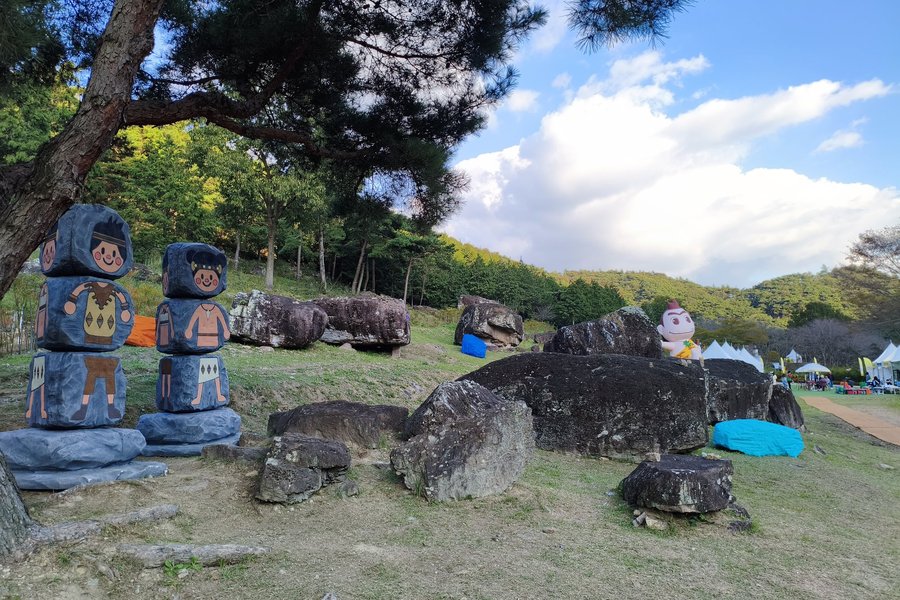
Time of the visit:the 24th of oct.,2025
On my way back from Unjusa Temple to Suncheon and from there to Gwangju, I got off at the bus stop for bus 218 (bus 318 also stops there ) right in front of the dolmen complex. The Hwasun Dolmen in South Korea are Bronze Age stone tombs made of large rock slabs. There were likely used for elite burials or rituals and show the advanced megalithic culture of ancient Korea.I visited both the Hwasun( roughly 550 stone structures) as well as the Dalbawi cluster(40 stone structures).The annual Dolmen Festival takes place once a year in October. I was very pleased by the lucky coincidence, as the more than 500 dolmens and the pleasant park only captivate you for a short time. One of the less interesting World Heritage sites out there.The festival was incredibly entertaining, diverse, and appealing to all the senses. There were many food offerings of regional specialties in numerous stalls that resembled medieval European marquees. There was live music from Korean pop and folklore, as well as drum groups. It was teeming with dinosaurs (for whatever reason), colorful fake dolmens, large plastic figures, exhibition areas with bonsai trees, and enormous, artistically arranged flower fields that were pleasing to the eye. It was already quite crowded for a friday; on the weekend, the area must be packed.A great idea to hold the festival in the dolmen area... well implemented in the dolmen landscape. It was fun to eat something, …
Keep reading 3 comments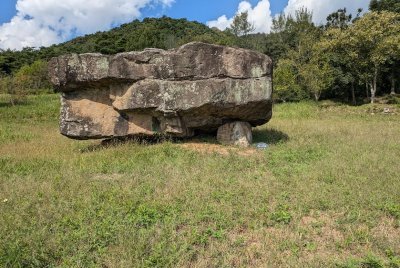
A decade ago, on my last day in Seoul before flying home, I ventured to Ganghwa to tick the Dolmens. I waited near a metro station in Seoul, trying to find the correct bus in heavy traffic. I think I missed one but eventually got on the right bus. The ride was long, and being offline, I missed my stop. Several Koreans on the bus gestured for me to get off, and I managed to exit one station late, so I only had to walk a little.
The bus ride was the most memorable part of the visit. There was one iconic dolmen, but for those who have seen Carnac, it was underwhelming. The newly built museum was also closed, likely because it was a Monday. After two loops around the grounds, I waited for my bus back to Seoul.
Given my previous experiences, I was not inclined to visit more Dolmens. However, we had set ourselves the challenge of visiting all Korean sites in three weeks, so we had to visit a Dolmen site. Based on Philipp's review and the involved logistics, we settled on Gochang.
Gochang is a much better site than Ganghwa. There are plenty of Dolmen fields and formations to explore. As previous reviewers noted, there are multiple trails to hike. Exploring the site takes at least an hour. Additionally, the Koreans have set up a full tourist infrastructure with a large, multimedia-heavy museum, a historic village, a tourist train, cafes, restaurants, and …
Keep reading 0 comments
Dolmens have always interested me, at least ever since I found out about them. In fact, I first encountered them on the List, reading about the newly inscribed Antequera Dolmens back in 2016 and then trying unsuccessfully to visit them the following year. Preparing for my trip to Korea in June 2023, I tried my very best to research on how to see them the best way, and especially with the website as a major source, I decided that Gochang would be the best place to experience this site. Staying the night in Jeonju, Gochang would be a 1:40-long bus ride away and 40 minutes away from Gwangju, from which I took the next bus to Suncheon as there was no direct one from Gochang, so there was no time to spare. Despite a bus route existing between the bus station and the site, my failure to find the bus stop led to our decision to just take a taxi there - the ride took under 10 minutes with no traffic. Finally, it was time for me to see my first dolmens!
The Gochang Dolmen Site consists of six "courses" or sections; the main path from the visitor center and museum area leads straight to the expansive third course, and this forms a linear route with the first and second courses to the right and the fifth course to the left. The fourth course is the quarry, located further up the hill behind the third course, and the sixth …
Keep reading 0 comments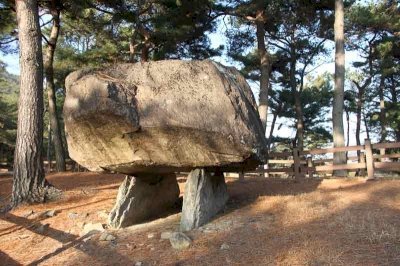
Visit February 2020 - Dolmen sites are generally not too appealing for me, but in a land full of temples and palaces, they were a nice disruption. Unlike most others I did not visit Ganghwa (easy one for a revisit to Korea) but went for Gochang and Hwasun.
Gochang
Gochang is probable the main site among the three. It is not ideally located, but at least there are two Seowons nearby. You start your visit with a museum that displays the life in times of these dolmens with live size figures. The area is rather big and stretches into three directions. Lazy folks can use a shuttle bus. The left side after the river are primitive capstone type dolmen. On the right side you will find some beautiful go-board type and table type dolmen. The most beautiful table type dolmen however is on the museum side of the river. It is rather poorly signposted, so ask if you are not sure.
Hwasun
While Gochang is a very “commercialized” dolmen site, with entry fee, museum, map and shuttle bus, Hwasun is different. I guess not many have visited the site due to it’s off the path location. But it is actually rather close to the Unjusa Temple TWHS, a must see in Korea in my opinion. There is a parking lot and a small (closed when I arrived) information center. Other than that, you just follow the foot path along the road and look out for sparse …
Keep reading 0 commentsBernard Joseph Esposo Guerrero
Gochang, Hwasun, and Ganghwa Dolmen
Gochang, Hwasun, and Ganghwa Dolmen (Inscribed)
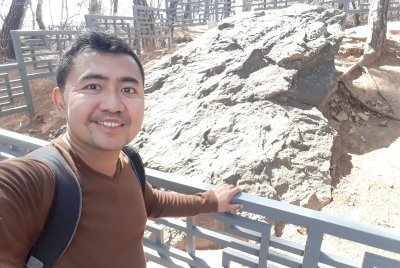
Bugeun-ri, Ganghwa: The tourist park is now being expanded at the back to include four more extant dolmens within the vicinity --- one, which is half buried, seems to be even bigger than the capstone of Big Dolmen (Bugeulli jiseok). I also decided to take a leisurely walk further into the adjoining pine forest-- a good idea to escape from the heat. Walking for 2 hours back and forth, I encountered no other person at all. One interesting dolmen there showed some carved holes, suggesting the method and outline the ancient people used in cutting these megaliths. The dolmens, though most of them are the unsupported capstone type with a few being collapsed table type, are all properly marked with their respective dolmen number and the WHS logo. There is even one dolmen that is not part of the inscribed ones, but is also protected on a local level and is marked differently (no WHS logo).
Keep reading 0 comments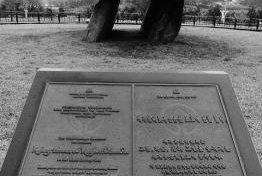
I visited this WHS in April 2017. I only visited the sites in Ganghwa Island closest to Seoul but after a number of video documentaries (the best one for an overview is https://m.youtube.com/watch?v=6osPwzl5OIE) and from information from the Ganghwa History Museum I visited (just opposite the dolmen park in Ganghwa), I would only visit the other sites if I were passing by the area as their only difference is the sheer amount scattered on the hill sides.
First of all let me explain how I got to the Ganghwa Dolmen Park and the other minor sites on Ganghwa island. By subway I got to Sinchon "Bus Terminal" (Exit 4). From there my suggestion would be to forget the misleading title "Bus Terminal" and without crossing the road simply look for the first lamp post with a bright red sticker showing Bus 3000. That is where you'll have to wait for the 90-minutes bus ride to the main town of Ganghwa-eup. A printscreen with the name in Korean and a picture will help the bus driver know where you want to go.
Once you get on the island from Ganghwa-eup Bus Station, head to the small tourist information booth and ask for information to the Bugeun-ri Dolmen Site (20 minute bus ride). The friendly staff will write down the bus number for you as well as the platform number and departure time. Once you get to the largest dolmen in Korea you can follow a 2km hiking trail to the minor …
Keep reading 0 commentsThibault Magnien
Gochang, Hwasun, and Ganghwa Dolmen
Gochang, Hwasun, and Ganghwa Dolmen (Inscribed)
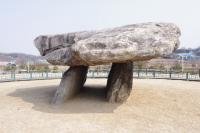
The Gochang, Hwasun and Ganghwa Dolmen Sites are locations for hundreds of dolmens used as graves and for ritual ceremonies. Most of these megalithic structures are dating from the period of the first millennium BCE. According to specialists, Korea contains more than 40% of the world's dolmen.
The site located on Gangwha Island is the easier most convenient one to visit from Seoul. From the Sinchon bus Terminal, take a bus to get to Gangwha Island bus terminal in one and a half hour and from there, take another bus to move on the island. However, the dolmen are scattered throughout the island and it is difficult to see most of them and to have a general view.
A notable dolmen on Ganghwa Island's site is a kind of table-type dolmen where it was believed ancestral rites were performed. This dolmen is thought to be the biggest in Korea.
Keep reading 0 comments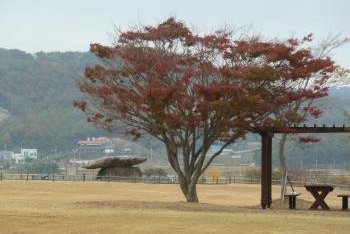
The main thing that struck me was how delicate this structure looked despite the massive size of its capstone, it was perched like a delicate Brancusi sulpture. Ganghwa island is littered with megaliths and if you really were keen this would be a good place to go exploring, apparently it is one of the densest concentrations in the world. As for me, I was here just to see the big one, which is now in a well-manicured park which does contain another standing stone (also part of the WHS).
My visit was a little brief as the weather wasn’t so nice, but the warm welcome and free cup of coffee from the friendly information centre kept me going. There is also a pretty new local history museum next door, but it was closed on the day I visited (Monday). There are regular buses from Ganghwa bus station; just asking for ‘Goindol’ got me on the right bus.
I wouldn’t say this would be most people’s highlight of Korea, but it was a nice place to head to on a quiet, slow and slightly gloomy day, it helped me recharge my batteries to gear me up for the delights of Seoul.
[Site 3: Experience 4]
Keep reading 0 comments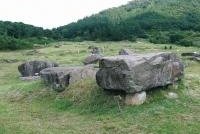
I have now visited all three WHS listed dolmen sites in Korea and consider the Gochang site to be the most interesting. There I saw a whole mountainside dotted with 128 dolmen of several different styles. Altogether there are around 2000 dolmen on this district. The visitor centre at the dolmen site is served by a bus from Gochang town, which in turn has bus connections with Jongeup and Janseong, both stations on the Mokpo railway line.
The Hwasun dolmen I reached from Neungju railway station, and the Ganghwa site by bus from the Sincheon bus station in Seoul.
Keep reading 0 comments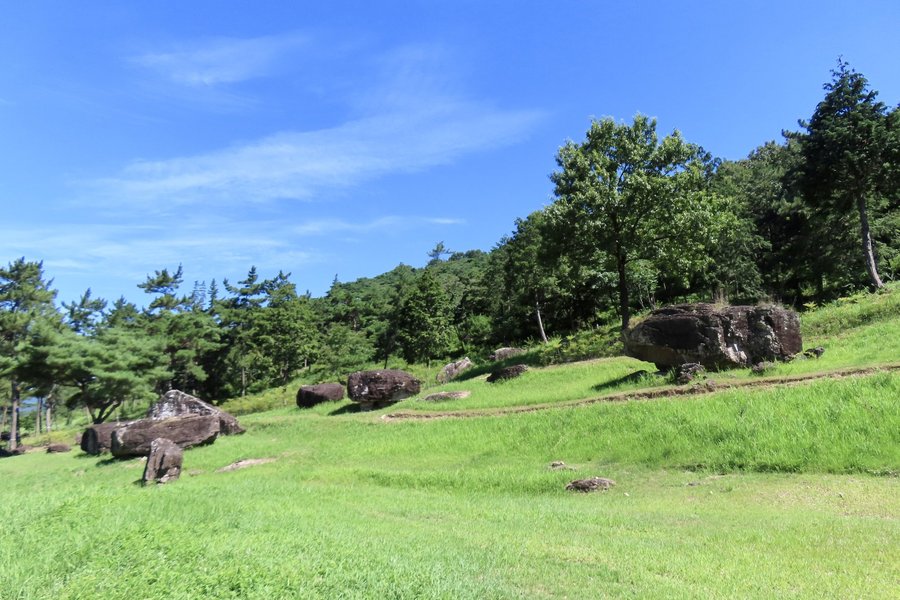
Korea's Dolmen WHS has long been the lowest rated site in Korea. My theory is there are three reasons for this. Firstly, I think Korea has struggled to show off its OUV and how best to enhance the visitor experience. Secondly, for the casual visitor there just is not enough obvious, accessible remains that clearly stand out as megalithic structures shaped and transported by ancient people. For example, if the dolmen were in a straight line or pattern, this would indicate an obvious human alteration. Without these clearly visible indicators, the dolmens in Korea largely fail to resonate as outstanding examples of a megalithic culture (despite their enormous number of dolmen). Lastly, all three components take some work to visit and the journey often feels excessive compared to the reward.
Korean Dolmen (Collage)
I have completed visits to all 3 dolmen sites. These visits span 17 years.
Ganghwa (Gyeonggi-do)
After visiting the largest and most impressive single dolmen in Korea, you can make your way to other inscribed dolmen locations on the island at Gyosan-ri, Samgeo-ri, Gocheon-ni, and Osang-ri. I walked the forest trails to Samgeo-ri and while nothing was spectacular, it at least added to the experience of searching for dolmen on Ganghwa Island. To enrich your experience in Ganghwa-do you might visit some of the maritime fortifications on the coast facing Gimpo or hike Manisan.
Gochang (Jeollabuk-do)
I tend to agree Gochang is likely the best component to visit if you only have time for one Dolmen …
Keep reading 0 comments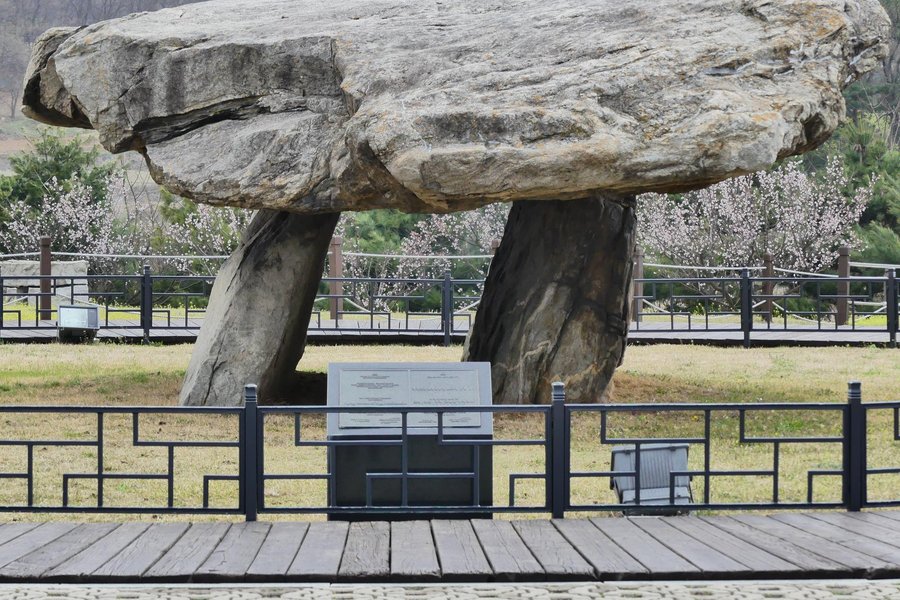
I visited the dolmen site in Ganghwa Island in Jan. 1, 2010. It is an ideal day trip for those based in Seoul. The earliest bus from Sinchon station is at 5:40 a.m. and the trip will take about an hour and a half.
There are many things to see in Ganghwa. Apart from the dolmen sites, I also visited fortresses (overlooking the sea) and a palace. Be sure to check the bus schedule as they are quite few. It was cold when I went and waiting for buses going back to the terminal or to other locations in the island took at least 30 mins each time.
Keep reading 0 comments
It was really a wonderful experience visiting the Hwasun megaliths in December, 2007. As a person studied widely, the megaliths from India, I find the Hwasun megalithis really amazing. They are huge and impressive. I feel we need to make a comparative study of the Korean and Indian megaliths. In india also we have cup-marks on megaliths. I am happy that the site is well protected and maintained.
Keep reading 0 comments
First of all the Ganghwa dolmen are spread all across on a mountain park and you have to go through a steep climb to get there and to reach the park you need to go through a small village through the island but it was an incredible world heritage site.
Keep reading 0 comments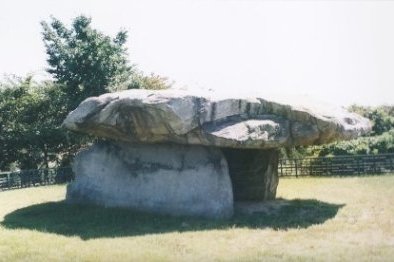
Of these Korean dolmen sites, I only visited the big one at Ganghwa Island (near Seoul). No entrance fee there, though the dolmen is placed in a little park and there is the ubiquitous soft drink vending machine.
Simply getting there, and enjoying the Ganghwa landscape was the most interesting part of my visit. The dolmen itself is "just" 3 stones put on top of each other. I have seen those before in Holland.
But I have good memories of visiting this site because it was the 7th and last world heritage I saw on my trip to Korea. As this one is quite out of the way and was not included in my original travel plans, I am glad that I was able to visit it after all.
Keep reading 0 comments
